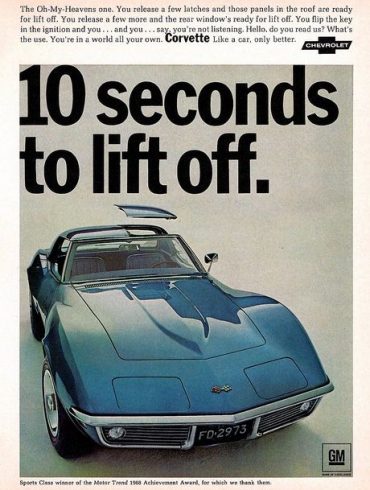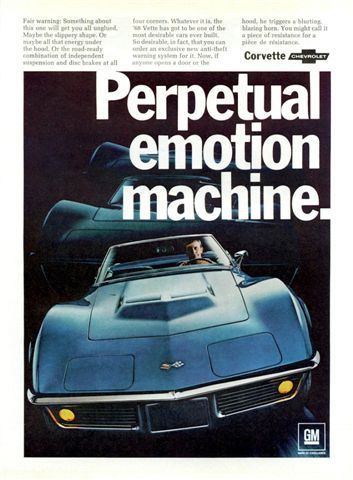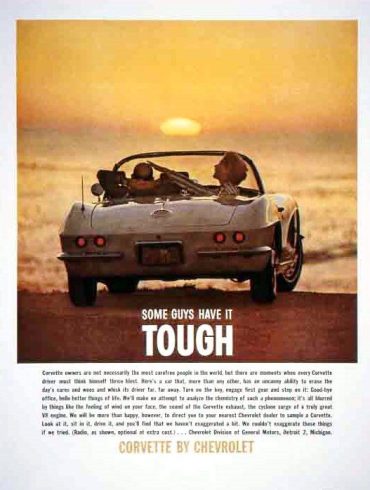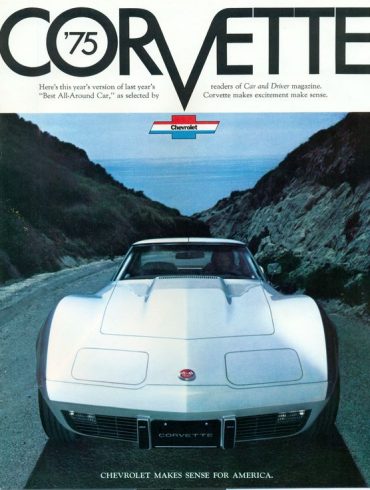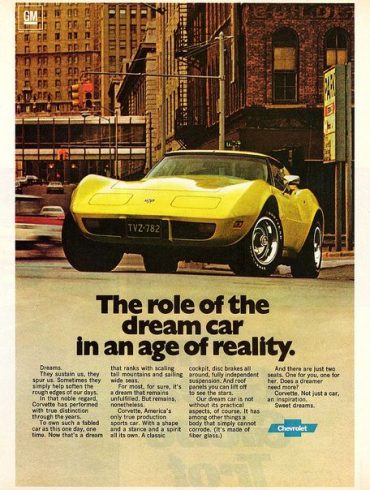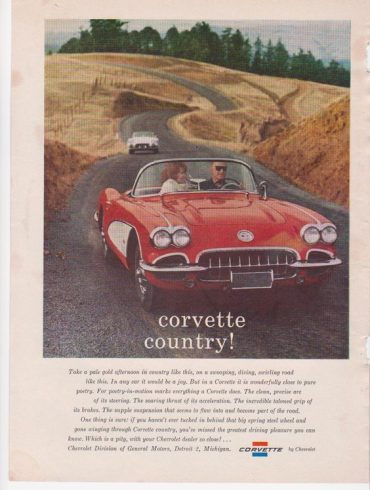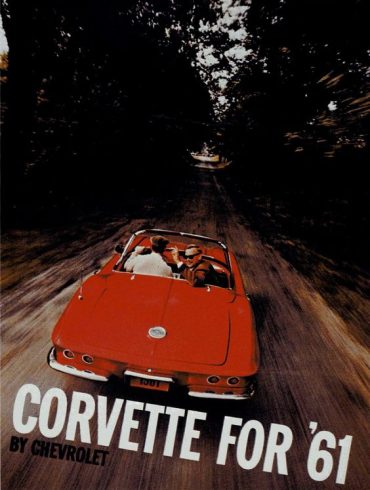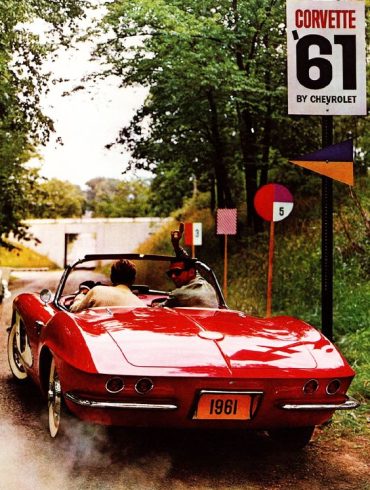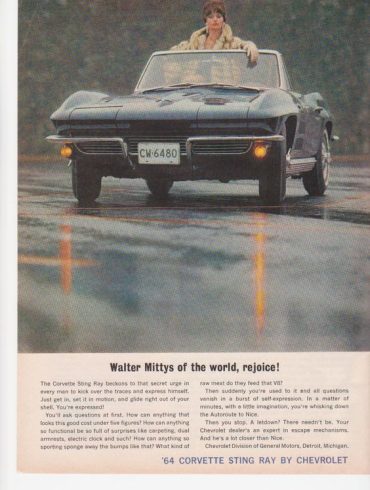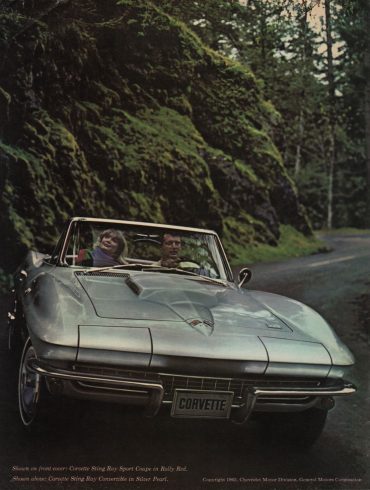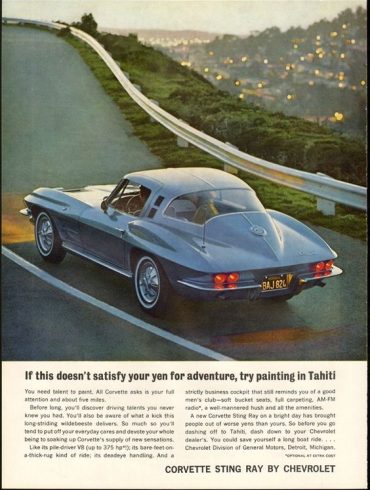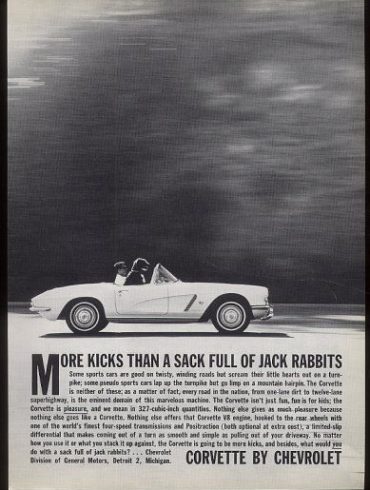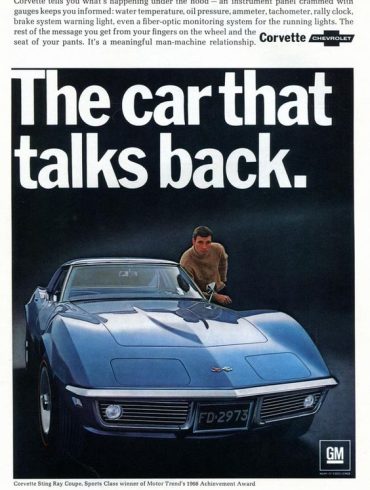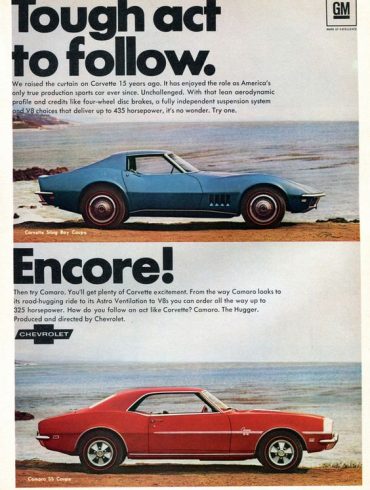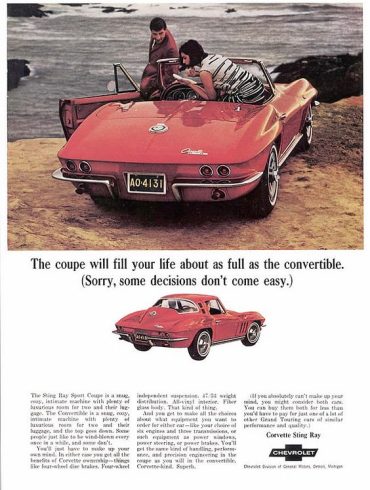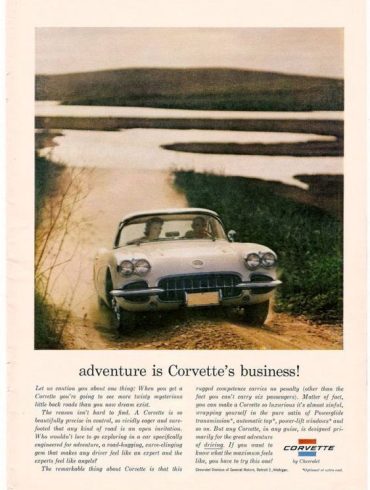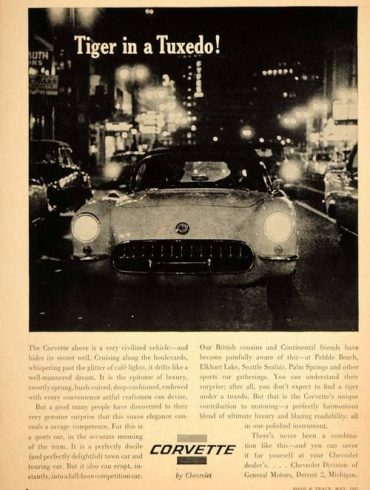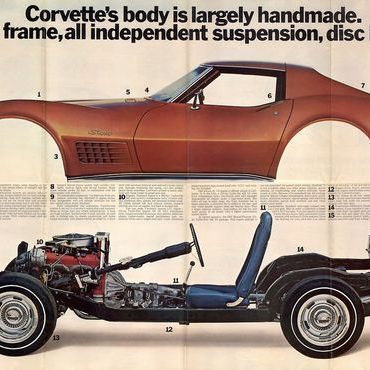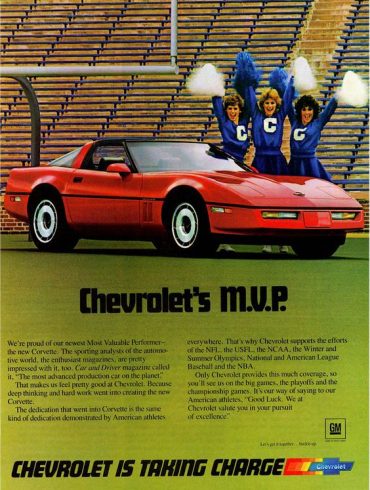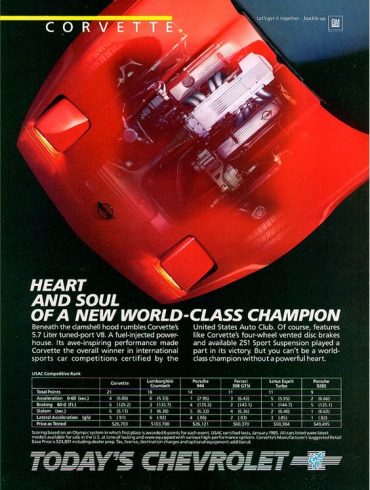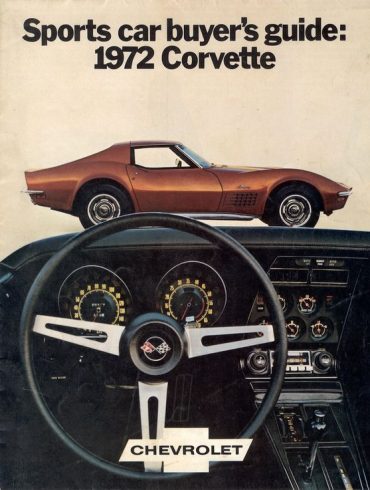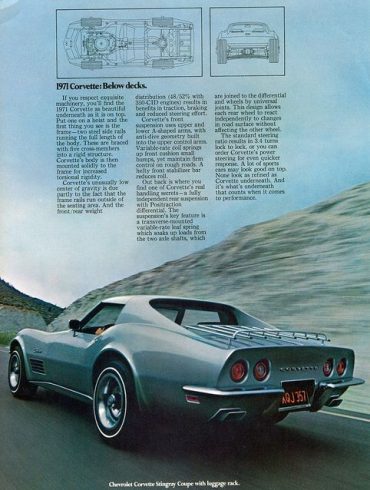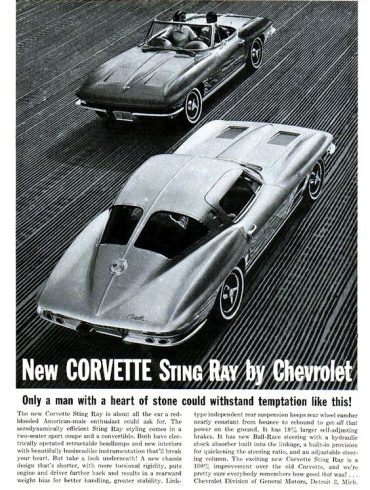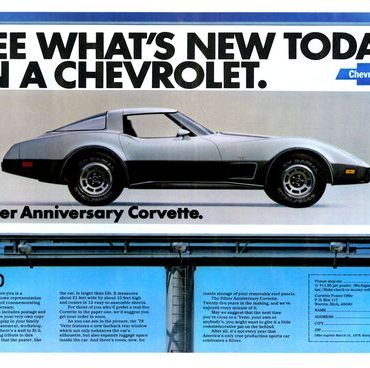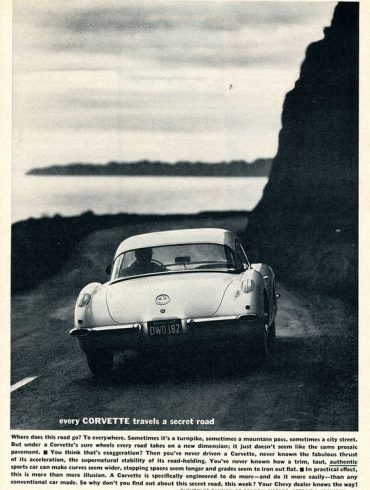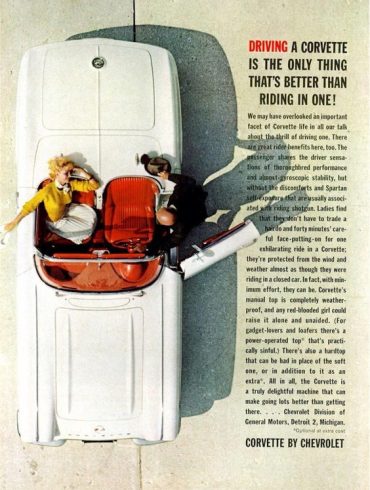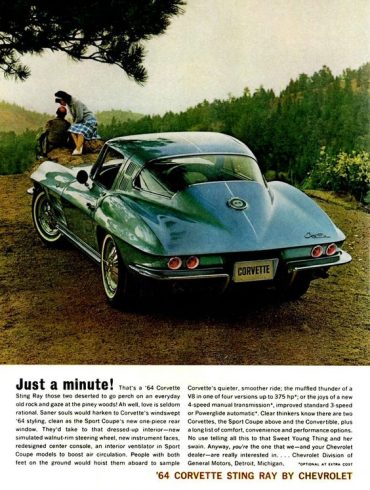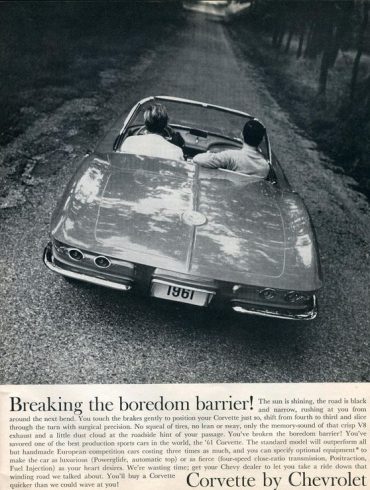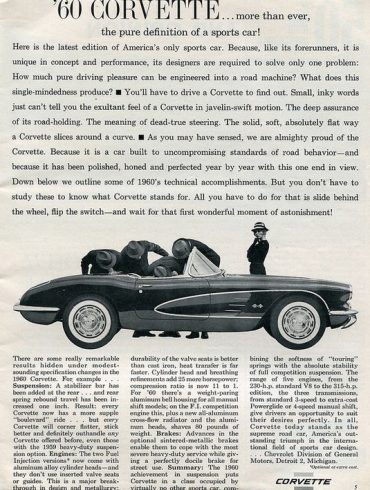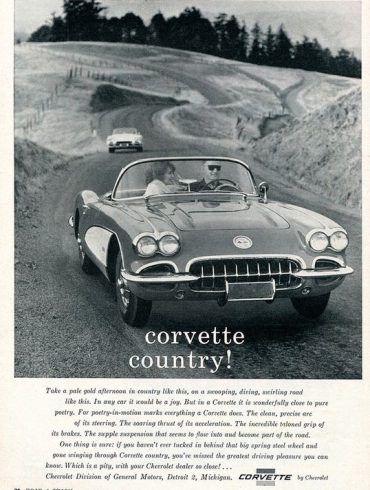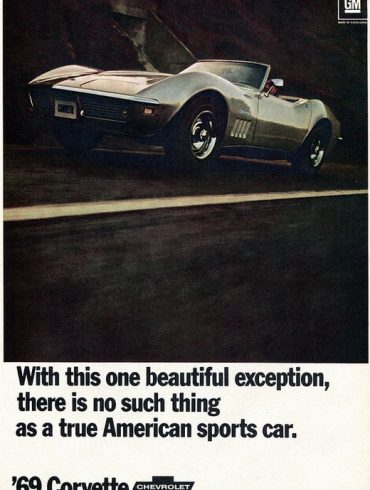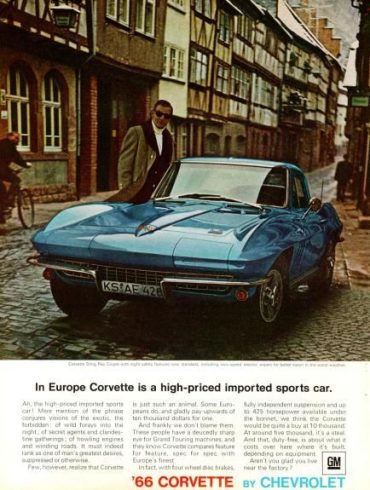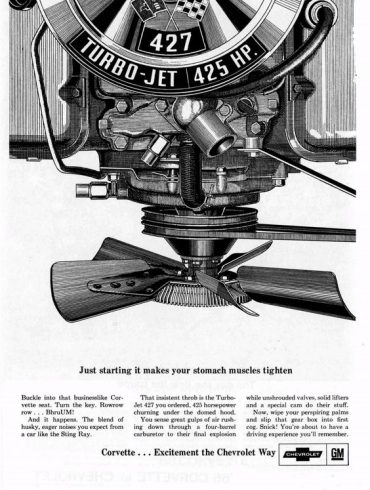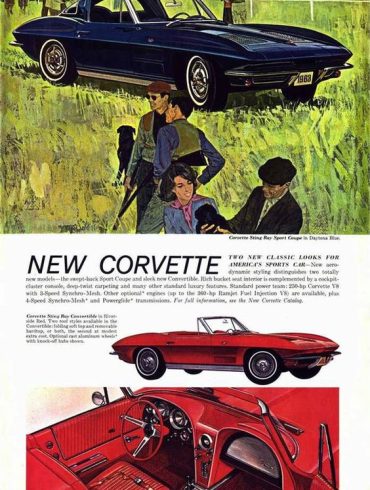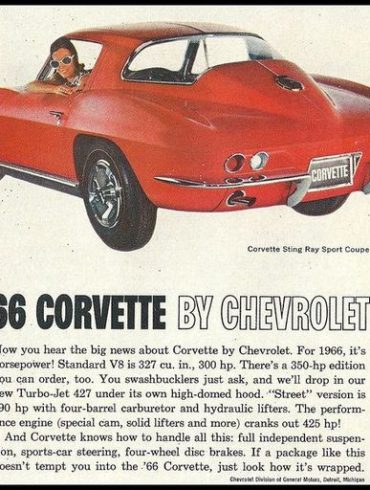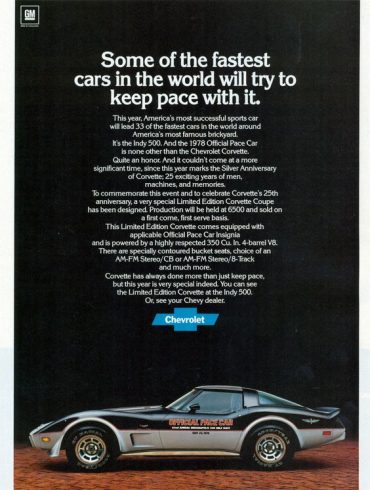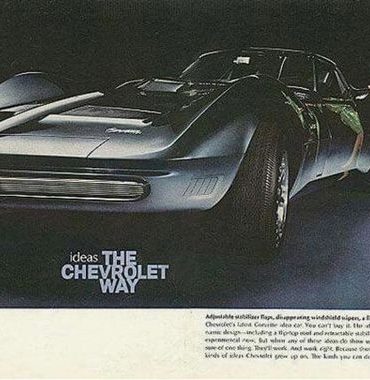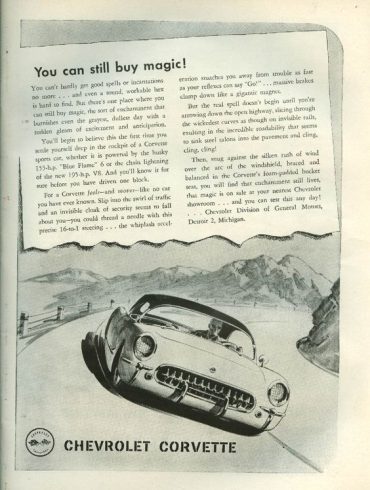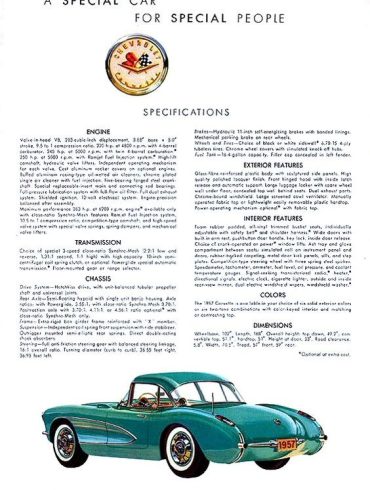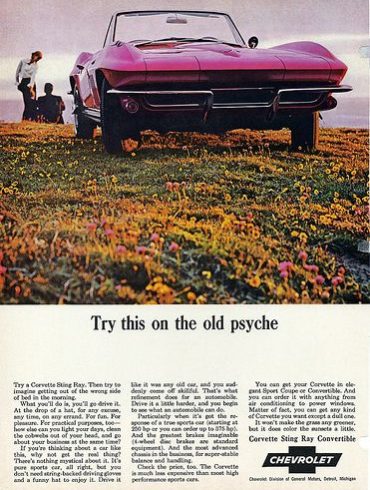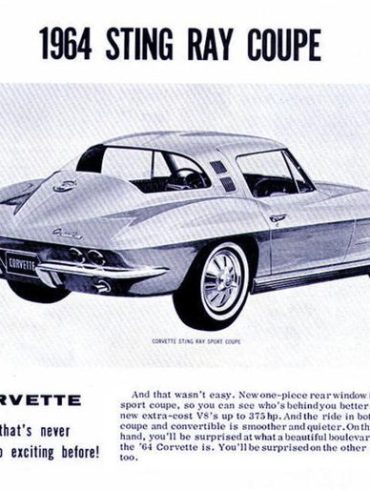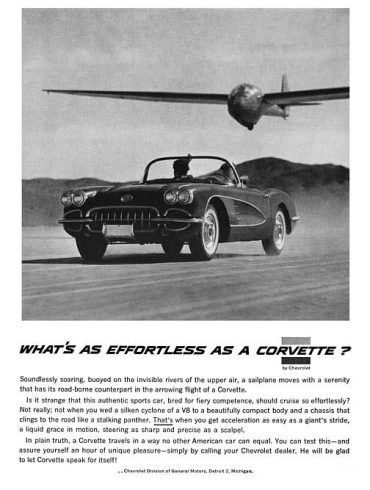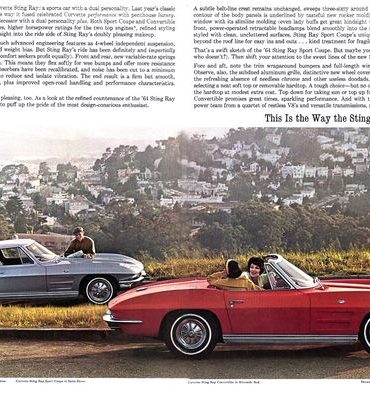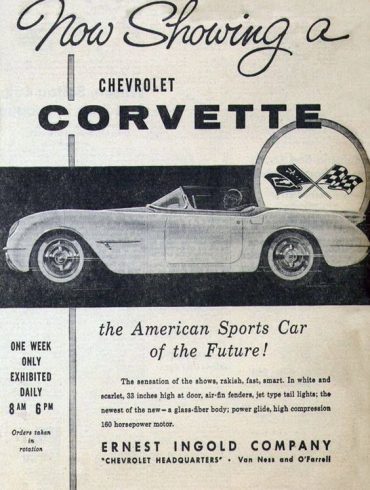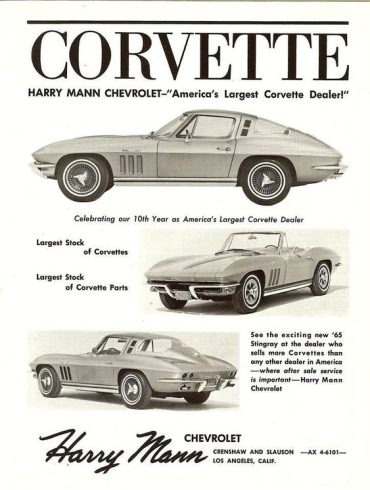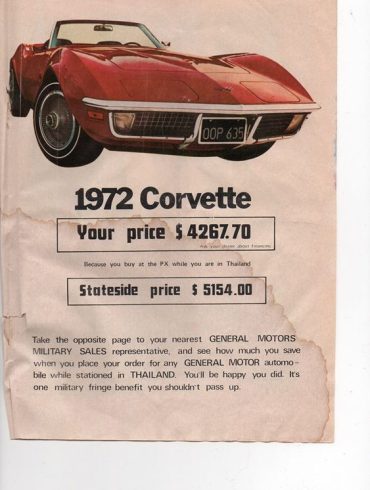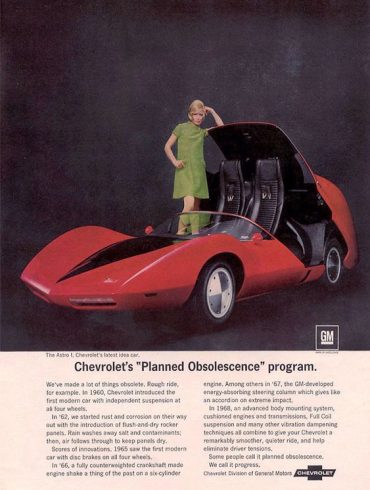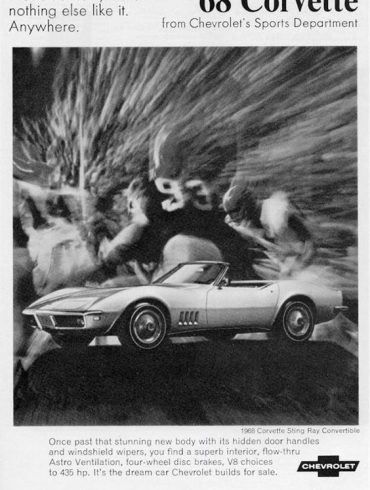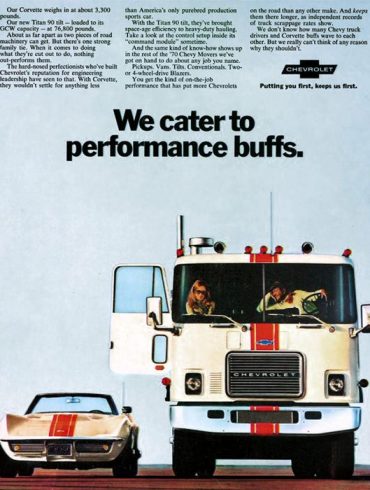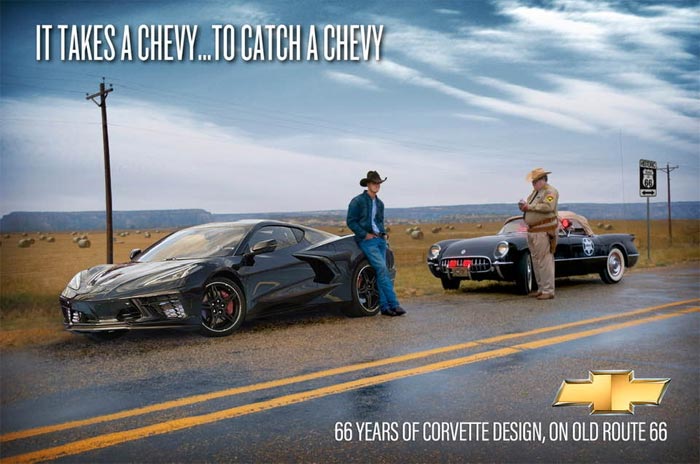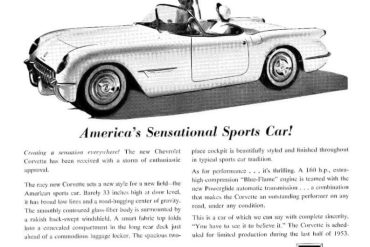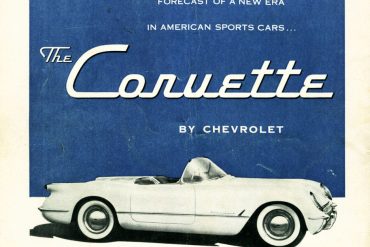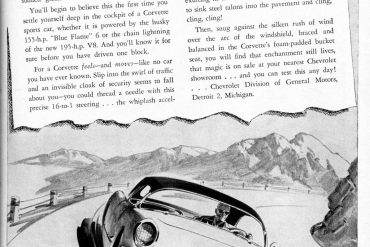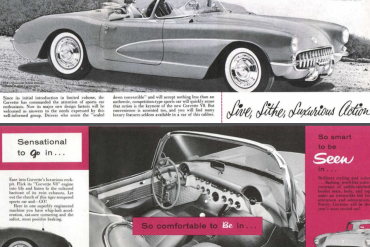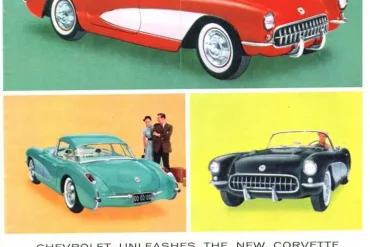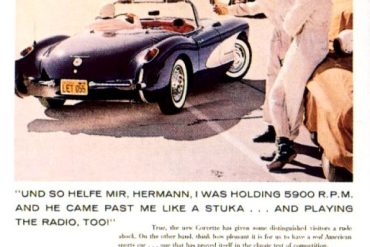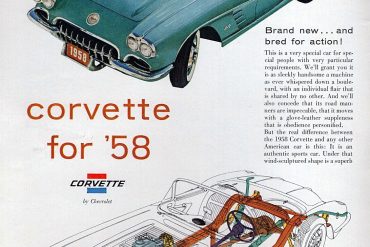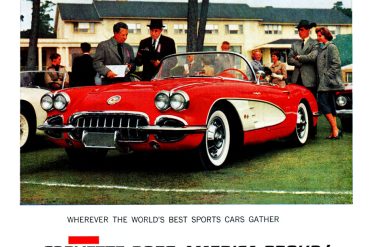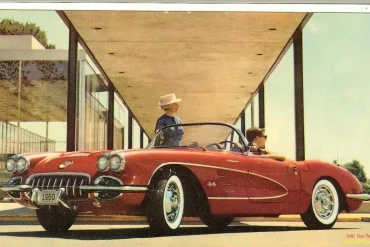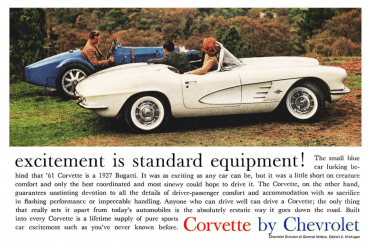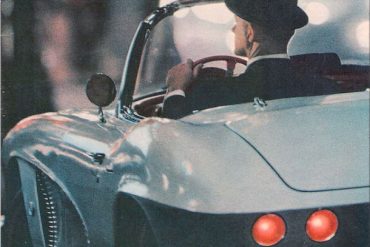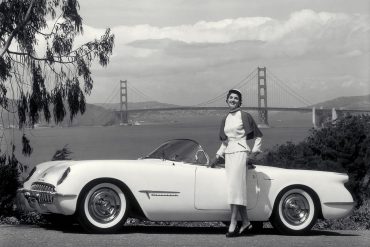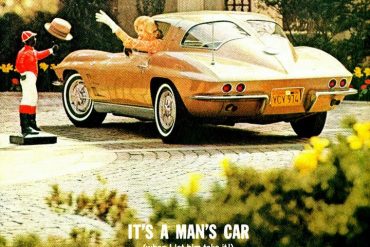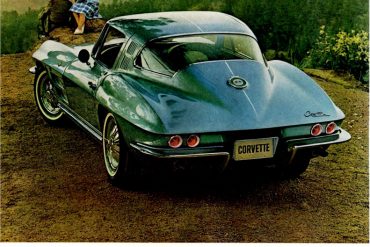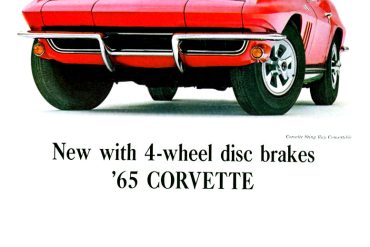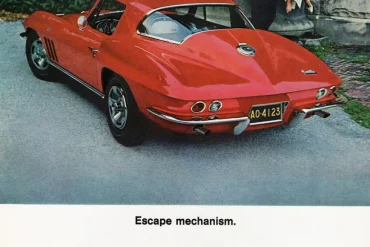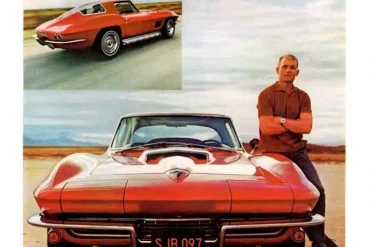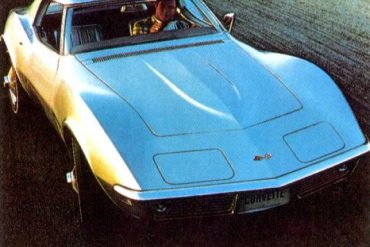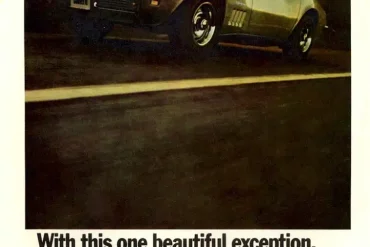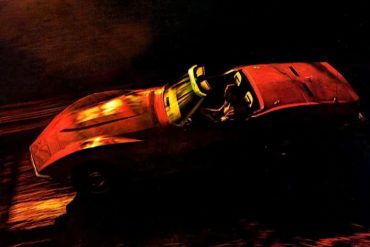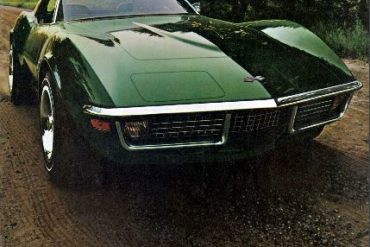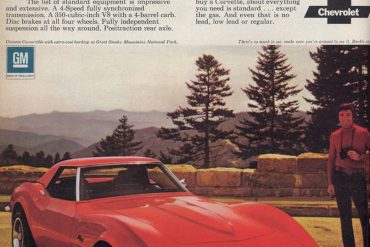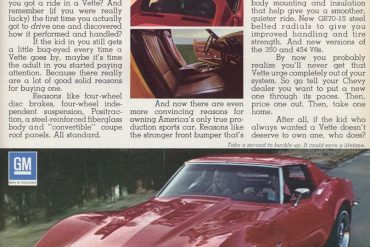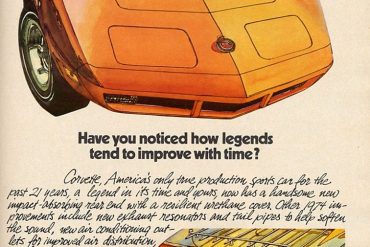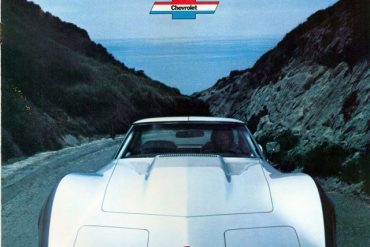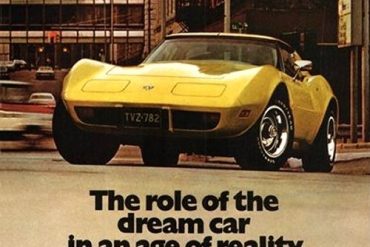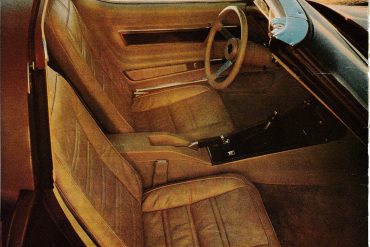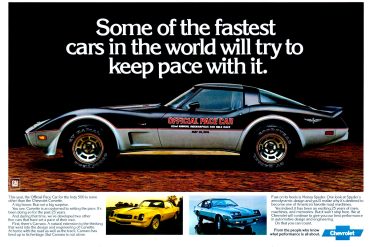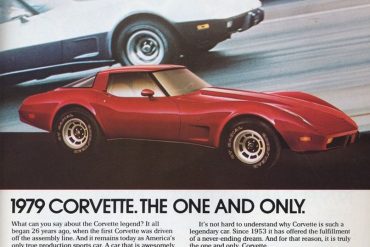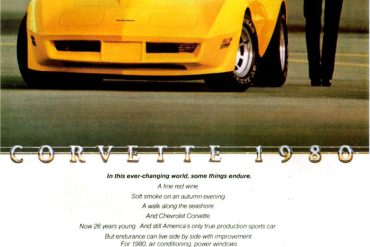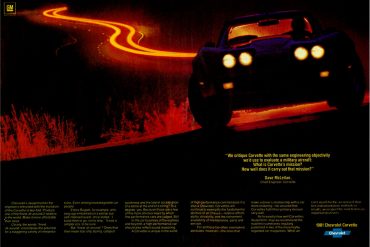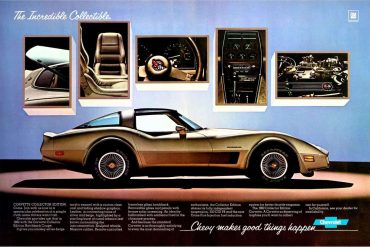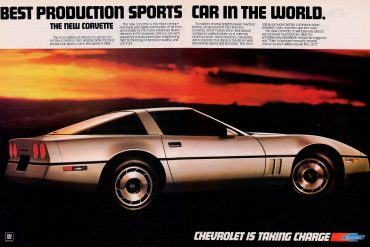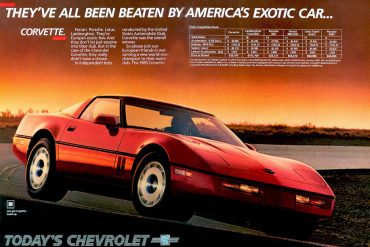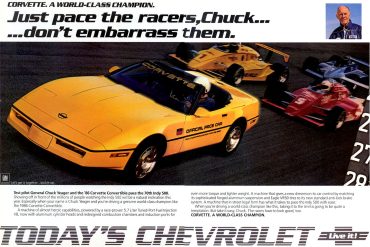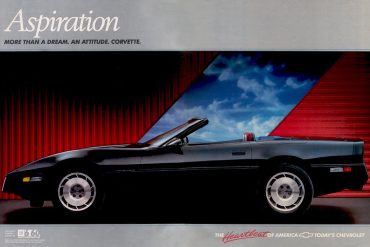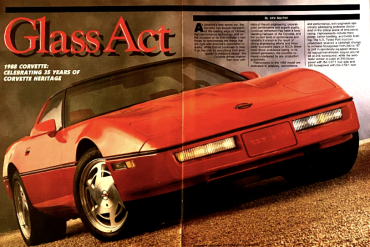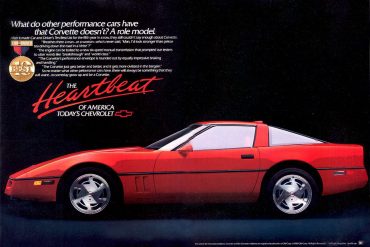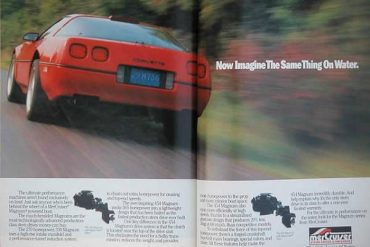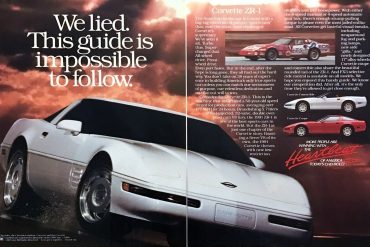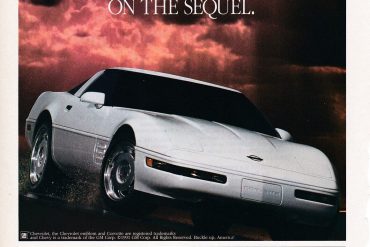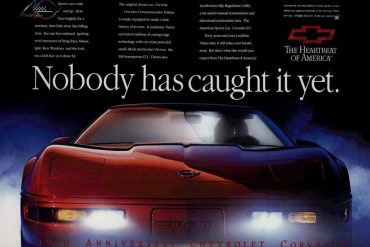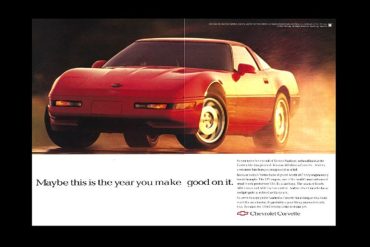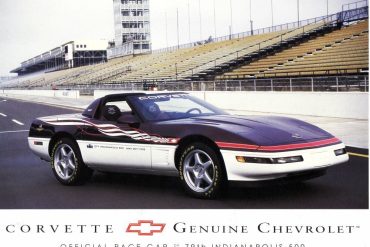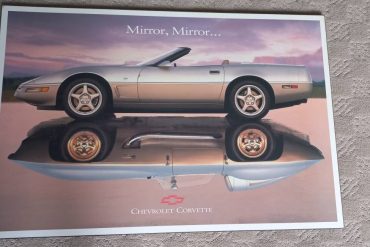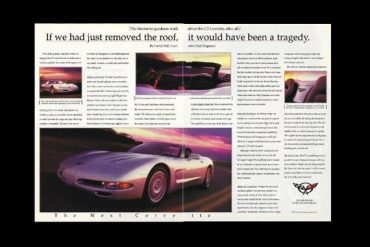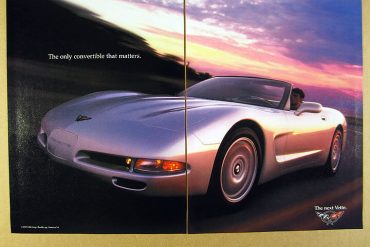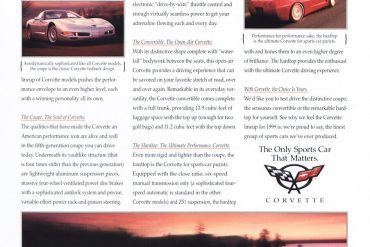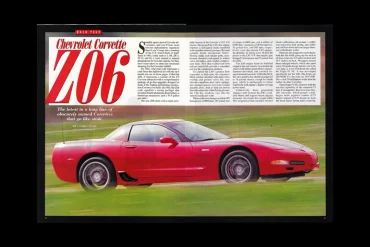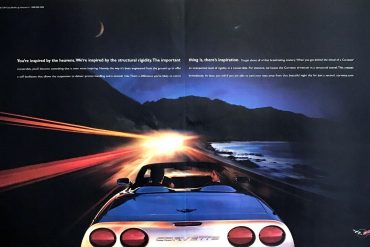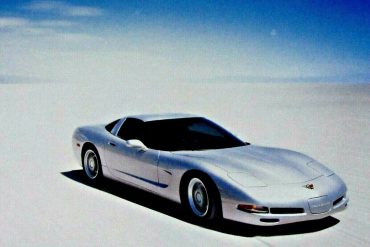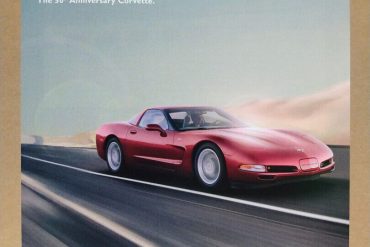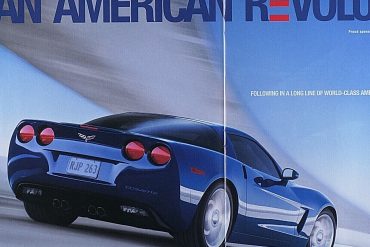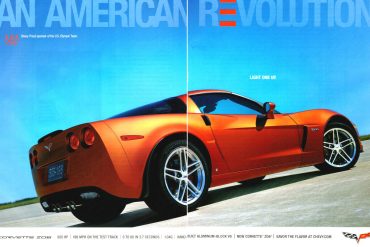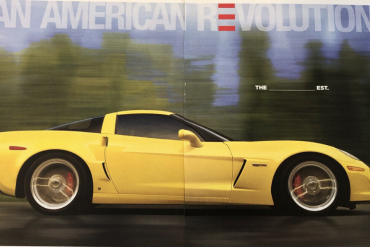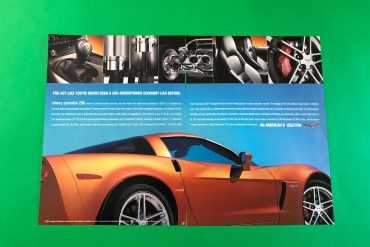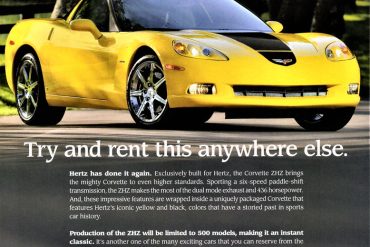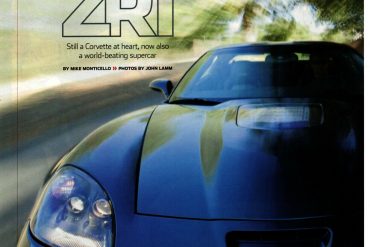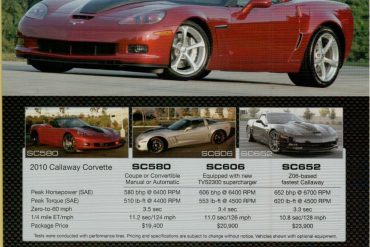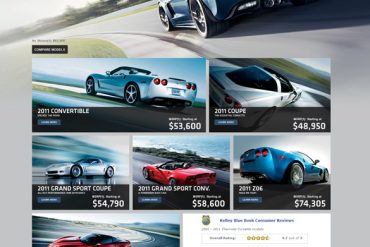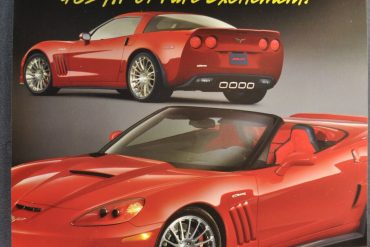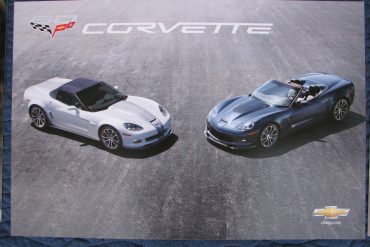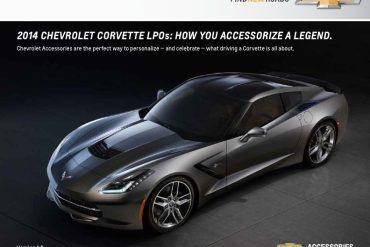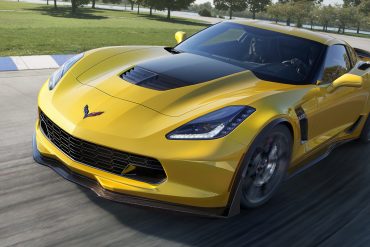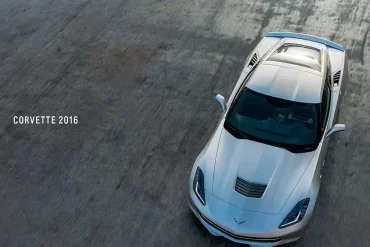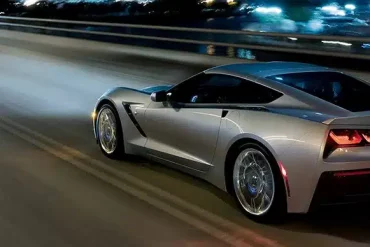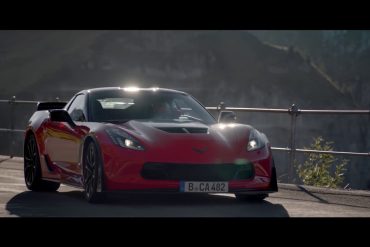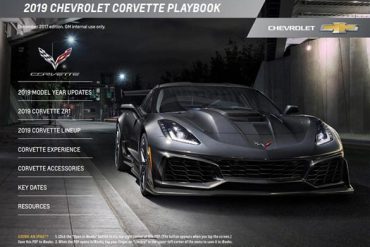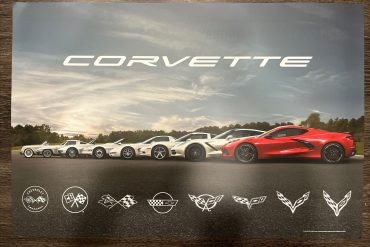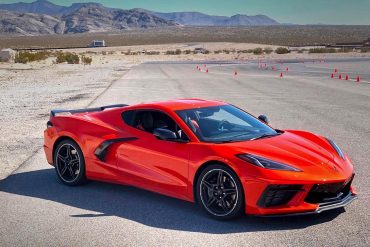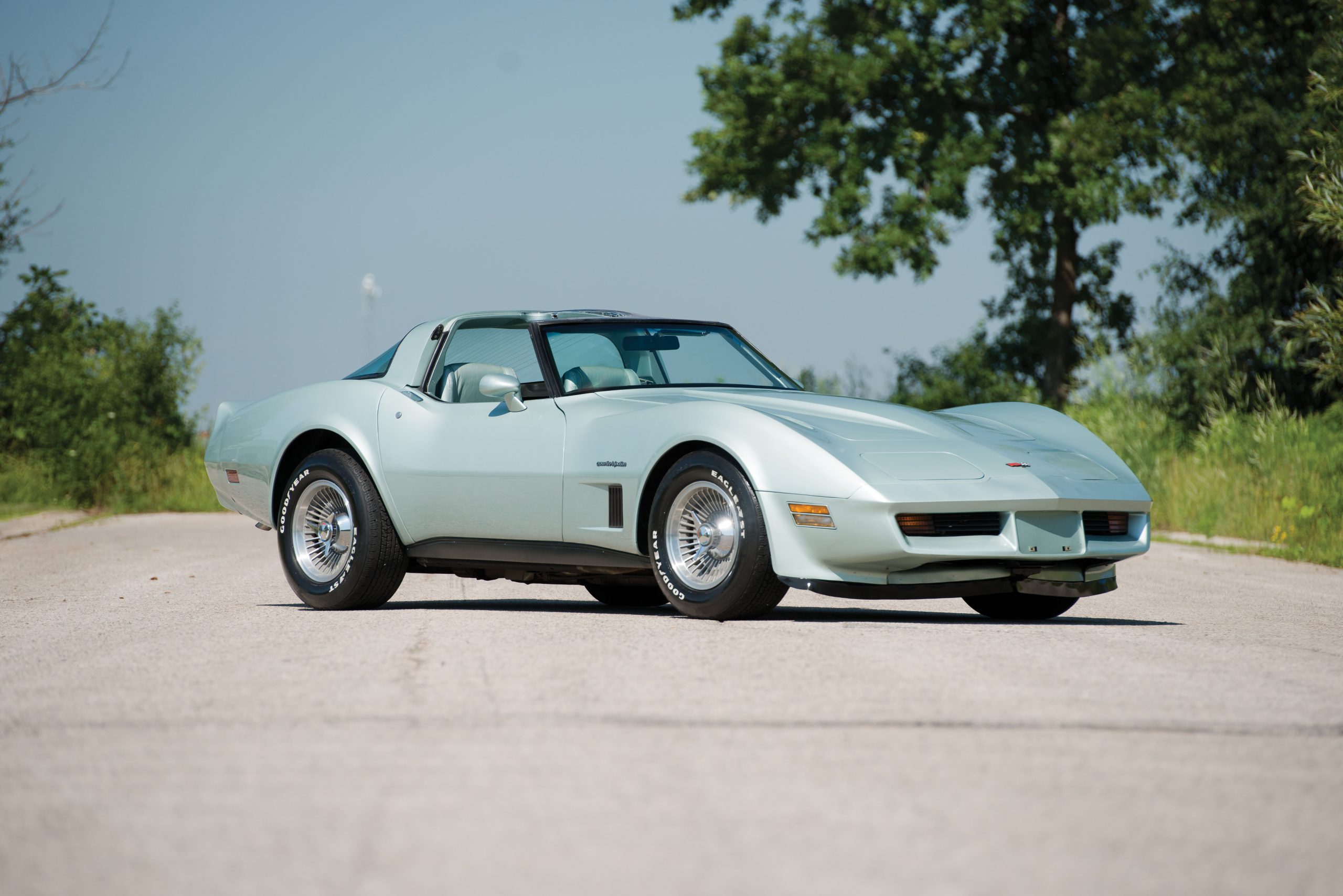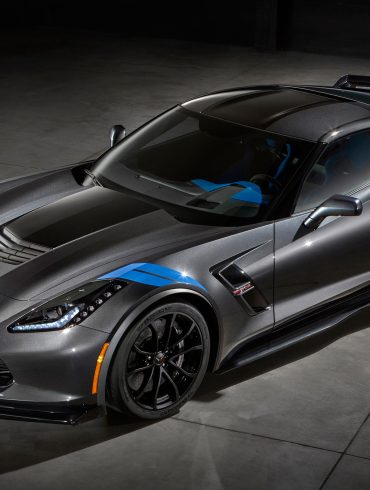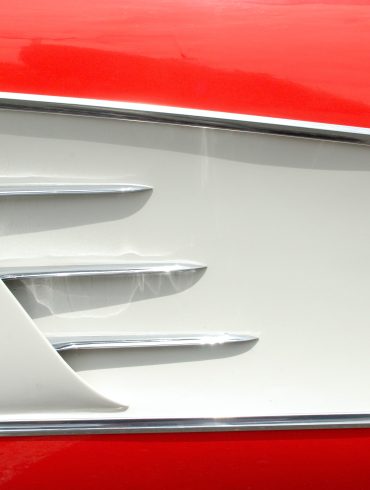Magazine and newspaper advertisements were a major source of brand awareness and salesmanship, back in a time when radios and TVs were few and far between, and the Internet hadn’t even been dreamed of. We didn’t have infomercials, or Facebook…the world of advertising was primarily based on print advertising. The benefit for us is being able to see these classic ads in retrospect! As we did our research for the ultimate Corvette website we came across some awesome old Corvette advertising. Vintage Corvette ads that tell the story of the old days and really built the amazing brand we know and love today. We then went deeper to find as many vintage and old Corvette ads as possible and share them here. We love the fun in the sun imagery of the 1950s and the “you’ve always wanted a Vette” language of the 1960s and 1970s. The 1970s also saw the performance credentials get quoted a lot and the real muscle car and macho imagery as the main advertising focus. Efficiency was the theme of the of fuel-saving years while the late 1980s and early 1990s moved back to performance and comparison of the Corvette and the world’s best sports cars. Nostalgia is consistent throughout the years until more recently where the performance of Corvette’s is the focus. Lots of racing mentions and lots of performance times mentioned too. Check out all the cool Corvette magazine ads, brochures and advertisements in newspapers.
Iconic Chevrolet Corvette Ads Over The Years
Advertising is all about marketers trying to make you react and feel. When it comes to vintage Corvette advertising you can see how the marketing team at Chevy tried to do just that. You can see below how Corvette Advertisements are an essential component of any Corvette’s history. The Chevrolet Company took a variety of forms to advertise the Corvettes in newspapers, magazines, and trade journals. These ads ranged from 4 x 5 postcards to full-page or double-page adverts in newspapers and magazines. There were also brochures, sheets, or cards prepared that were distributed directly to potential customers at dealerships as well as car shows and other events. Below we have chosen our favorites, some of the most iconic Corvette ads ever created. Enjoy.
C1 Corvette Ads
Harley Earl, as head of GM’s Styling Section, was an avid fan of sporting cars. He recognized that GIs returning after serving overseas in the years following World War II were bringing home MGs, Jaguars, and Alfa Romeos. In 1951, Nash Motors began selling an expensive two-seat sports car, the Nash-Healey, that was made in partnership with the Italian designer Pininfarina and British auto engineer Donald Healey, but there were few moderate-priced models. Earl convinced GM that they needed to build an all-American two-seat sports car, and with his Special Projects crew began working on the new car in late 1951. The last time Chevrolet offered a 2-door, 2-passenger convertible/roadster body style was in 1938 with the Chevrolet Master. A lot of the early C1 Corvette Ads focus on this sports car fascination and the creation of the American sports car industry with a local player taking a unique approach.
C2 Corvette Ads
The Corvette was first introduced in 1953, with just 300 hand-built models made in the first year of production. By the 1960s, however, Corvettes were more widely available which helped to make them one of the most iconic sports cars of all time. The early C2 generation print ads were focused on the "new" Corvette and the introduction of the Sting Ray name. Our favorite C2 Corvette print ads have to be the 1966 Corvette ad campaign featured some of the best car ads ever made, so be sure to check out these awesome ads below.
C3 Corvette Ads
The C3 Corvette advertising campaigns were all about the dream of buying a Corvette and how you were buying more than just a car, you were fulfilling a dream. Chevrolet played up the Corvette compared to its competition and invested in positioning the Corvette advertising to tell the story of its dominance.
C4 Corvette Ads
When the C4 Corvette debuted for 1984, General Motors was understandably excited. America’s sports car had been introduced 30 years before, only to later dwindle into near irrelevance thanks to a combination of factors. That enthusiasm comes through loud and clear in this commercial for the all-new Corvette, and it’s really something. The C4 was supposed to bring balance back to the Corvette line, spoiling the driver with brute power, thrilling acceleration, handling precision, quick braking, and luxurious comfort in a stylish package. Since the nameplate had grown to stand for advanced performance, the auto giant chose to really push the envelope. They created a TV commercial that emphasized it came with “the world’s first computer-activated manual transmission.” The LCD gauge cluster was another big leap forward for back then, especially since it provided the driver with 14 separate readouts, which were updated in real time in milliseconds.
C5 Corvette Ads
Following the thirteen year run of the C4, the public anxiously anticipated the new fifth generation Corvette. And GM was well aware that due to the vastly improved, entirely redesigned C5 they needed to use some print advertising, which they had not used in over a year, to promote the changes the newest generation of Corvette offered. GM turned to David Hill, the Chief Engineer of the Corvette, to deliver the word on the radically changed car in a series of ads during 1997. This first person description of the Corvette can be seen throughout all the C5 Corvette ads.
C6 Corvette Ads
The C6 Corvette featured a new chassis and styling with the “swoopy” lines that would become a signature for later Corvettes. It used an all-new chassis and body to improve performance and handling in the sports car. It did keep its classic American looks, though. The car was quick enough to compete with other supercars, but it also had a number of more subtle upgrades to improve handling and efficiency. You can see that focus in Corvette's print ads of the era, all about the performance and how it was a more refined machine compared to prior generations.


